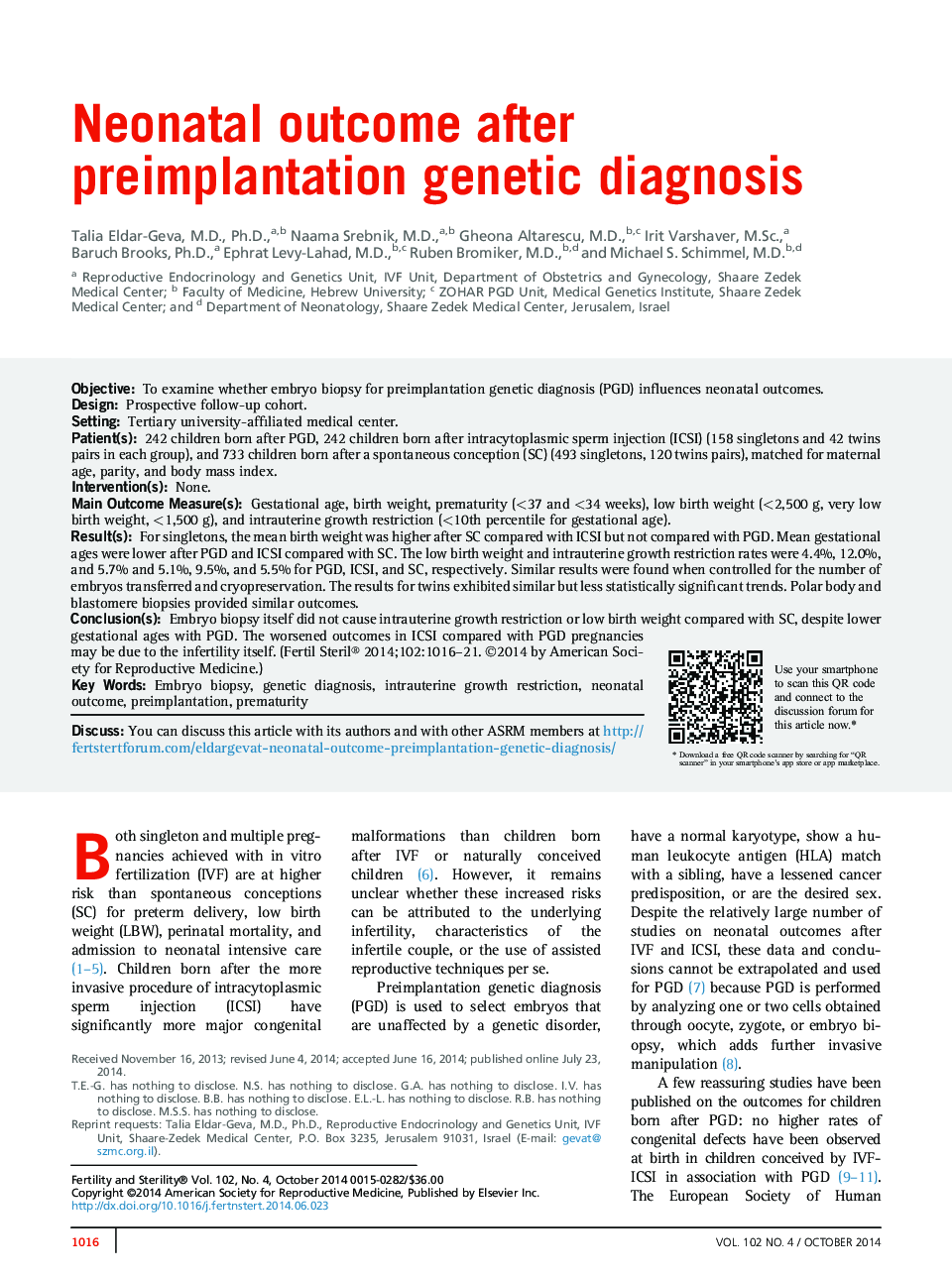| Article ID | Journal | Published Year | Pages | File Type |
|---|---|---|---|---|
| 6181454 | Fertility and Sterility | 2014 | 6 Pages |
ObjectiveTo examine whether embryo biopsy for preimplantation genetic diagnosis (PGD) influences neonatal outcomes.DesignProspective follow-up cohort.SettingTertiary university-affiliated medical center.Patient(s)242 children born after PGD, 242 children born after intracytoplasmic sperm injection (ICSI) (158 singletons and 42 twins pairs in each group), and 733 children born after a spontaneous conception (SC) (493 singletons, 120 twins pairs), matched for maternal age, parity, and body mass index.Intervention(s)None.Main Outcome Measure(s)Gestational age, birth weight, prematurity (<37 and <34Â weeks), low birth weight (<2,500Â g, very low birth weight, <1,500Â g), and intrauterine growth restriction (<10th percentile for gestational age).Result(s)For singletons, the mean birth weight was higher after SC compared with ICSI but not compared with PGD. Mean gestational ages were lower after PGD and ICSI compared with SC. The low birth weight and intrauterine growth restriction rates were 4.4%, 12.0%, and 5.7% and 5.1%, 9.5%, and 5.5% for PGD, ICSI, and SC, respectively. Similar results were found when controlled for the number of embryos transferred and cryopreservation. The results for twins exhibited similar but less statistically significant trends. Polar body and blastomere biopsies provided similar outcomes.Conclusion(s)Embryo biopsy itself did not cause intrauterine growth restriction or low birth weight compared with SC, despite lower gestational ages with PGD. The worsened outcomes in ICSI compared with PGD pregnancies may be due to the infertility itself.
